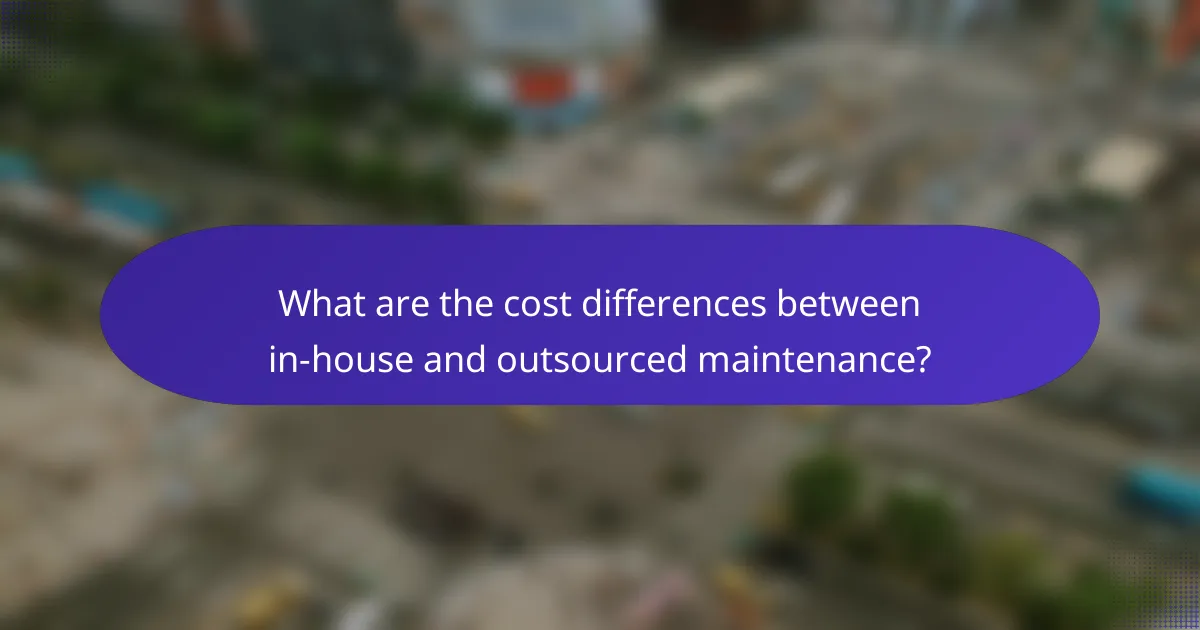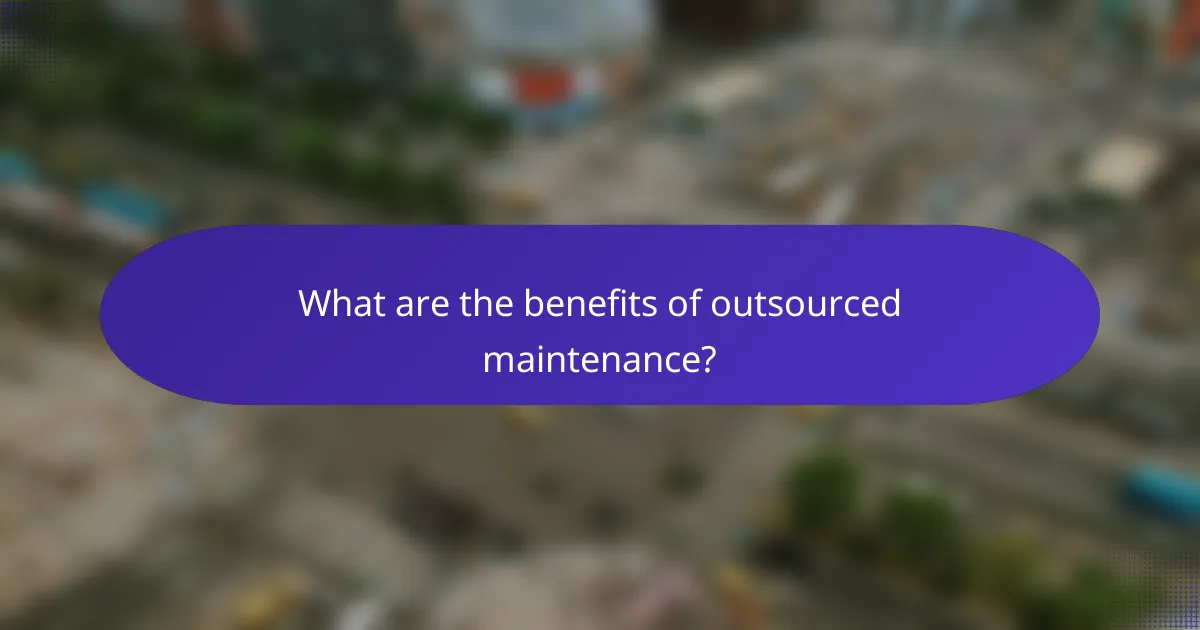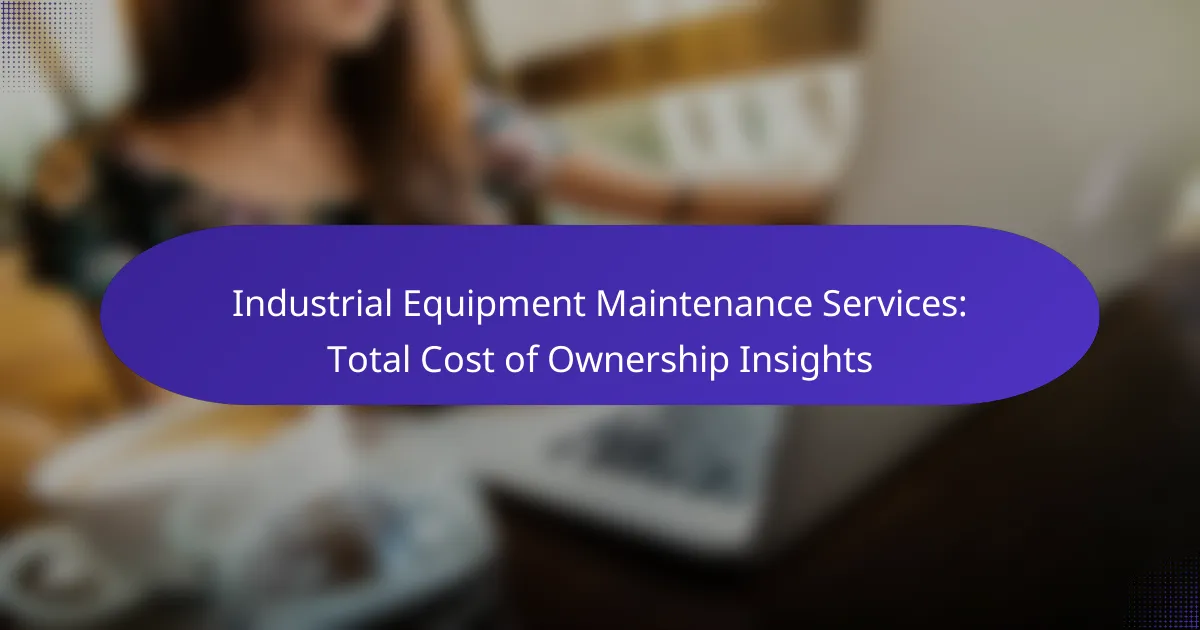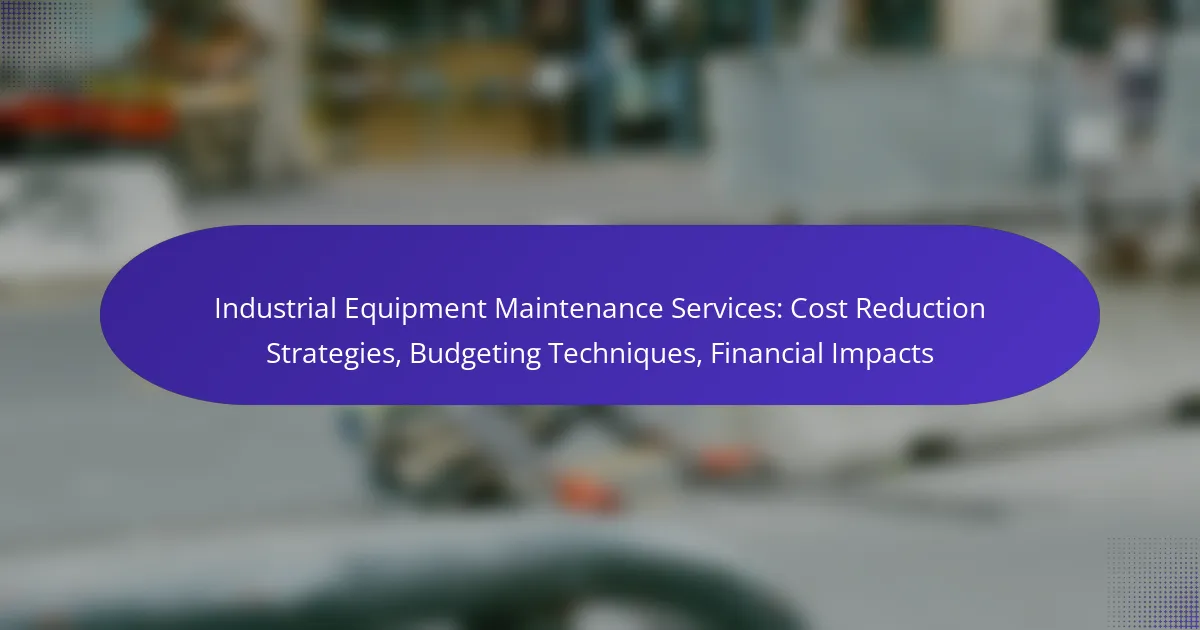When deciding between in-house and outsourced maintenance, businesses must carefully consider the cost implications and operational impacts of each approach. In-house maintenance often entails fixed labor costs and greater control, while outsourcing provides flexibility and access to specialized skills, potentially leading to more predictable expenses. Understanding these dynamics is crucial for optimizing maintenance strategies and aligning them with overall business objectives.

What are the cost differences between in-house and outsourced maintenance?
The cost differences between in-house and outsourced maintenance can significantly impact a business’s budget and operational efficiency. In-house maintenance typically involves fixed labor costs and overhead, while outsourcing can introduce variable costs based on service agreements and project requirements.
Labor costs comparison
In-house maintenance teams usually incur fixed labor costs, including salaries, benefits, and training expenses. This can lead to higher overall costs if the team is underutilized or if specialized skills are required. Conversely, outsourcing allows businesses to pay only for the services needed, which can be more cost-effective, especially for short-term projects or specialized tasks.
For example, a company might spend around $50,000 to $100,000 annually on an in-house technician, while outsourcing similar maintenance tasks could cost between $30,000 and $70,000 depending on the frequency and complexity of the work.
Equipment and facility expenses
In-house maintenance requires investment in tools, equipment, and facility space, which can add to the overall cost. This includes purchasing and maintaining specialized machinery, storage for parts, and workspace for technicians. Outsourcing eliminates these capital expenditures, as service providers typically bring their own equipment and resources.
However, businesses should consider the potential for additional costs in outsourcing, such as travel expenses for technicians or fees for emergency services. Evaluating these factors is crucial when deciding between in-house and outsourced maintenance.
Long-term financial implications
Long-term financial implications of in-house versus outsourced maintenance can vary widely based on the business model and industry. In-house maintenance may provide more control and consistency, which can be beneficial for long-term asset management. However, it may also lead to higher costs if the workforce is not fully utilized.
On the other hand, outsourcing can offer flexibility and scalability, allowing companies to adjust services based on demand. This can lead to cost savings over time, particularly for businesses that experience fluctuating maintenance needs. It’s essential to analyze projected maintenance demands and potential cost trends to make an informed decision.

What are the benefits of in-house maintenance?
In-house maintenance offers several advantages, including enhanced control over operations, faster response times, and tailored services. These benefits can lead to improved efficiency and effectiveness in managing maintenance tasks.
Control over operations
Having in-house maintenance allows organizations to maintain direct oversight of their operations. This control means that teams can quickly adapt to changes in workflow or address issues as they arise without waiting for external contractors.
Additionally, in-house teams are often more familiar with the specific equipment and systems used within the organization, leading to better-informed decisions and strategies. This familiarity can reduce downtime and increase productivity.
Immediate response times
In-house maintenance teams can respond to issues almost instantly, minimizing disruption. When a problem occurs, having staff on-site means that repairs can begin immediately, often within minutes.
This immediacy is crucial for businesses that rely on continuous operations, as it helps to prevent small issues from escalating into larger, more costly problems. For example, a manufacturing facility can avoid significant production delays by addressing equipment failures without waiting for an external service provider.
Customization of services
In-house maintenance allows for the customization of services to meet specific organizational needs. Teams can develop maintenance schedules and protocols that align closely with operational requirements and equipment usage.
This tailored approach can lead to more effective maintenance strategies, as in-house teams can prioritize tasks based on real-time data and feedback. For instance, a company may choose to focus on preventive maintenance for critical machinery, ensuring optimal performance and longevity.

What are the benefits of outsourced maintenance?
Outsourced maintenance offers several advantages, including access to specialized skills, flexibility in service scaling, and predictable costs. These benefits can enhance operational efficiency and allow businesses to focus on core activities while ensuring maintenance tasks are handled by experts.
Access to specialized expertise
Outsourcing maintenance allows companies to tap into a pool of specialized expertise that may not be available in-house. This can include technical skills, industry knowledge, and advanced technologies that enhance the quality of maintenance services. For example, a facility may require HVAC specialists who are trained in the latest energy-efficient systems.
By leveraging external experts, businesses can ensure that maintenance is performed to high standards, potentially reducing downtime and improving equipment longevity. This access can be particularly beneficial for complex systems that require niche skills.
Scalability of services
Outsourced maintenance provides the flexibility to scale services according to business needs. Companies can adjust the level of maintenance support based on seasonal demands or project requirements without the long-term commitment of hiring full-time staff. This adaptability can lead to more efficient resource allocation.
For instance, a manufacturing plant may need increased maintenance support during peak production periods, which can be arranged easily through an outsourced provider. This scalability helps businesses manage costs and respond effectively to changing operational demands.
Cost predictability
Outsourcing maintenance can lead to more predictable costs, as many providers offer fixed-rate contracts or service agreements. This allows businesses to budget more accurately for maintenance expenses without the variability associated with in-house staffing and training costs.
Additionally, outsourcing can reduce overhead costs related to hiring, training, and managing maintenance personnel. Companies can avoid unexpected expenses associated with equipment failures by having a clear maintenance plan in place, leading to better financial management.

How to choose between in-house and outsourced maintenance?
Choosing between in-house and outsourced maintenance depends on your organization’s specific needs, resources, and long-term strategy. Consider factors like cost, expertise, and control to make an informed decision that aligns with your operational goals.
Assessment of internal capabilities
Start by evaluating your team’s existing skills and resources. Determine if your staff has the necessary expertise to handle maintenance tasks effectively or if additional training is required. Assessing internal capabilities helps identify gaps that may necessitate outsourcing.
Consider the volume and complexity of maintenance tasks. If your organization frequently requires specialized skills or has a high workload, in-house maintenance may strain resources. Conversely, if tasks are routine and manageable, in-house solutions could be more cost-effective.
Evaluation of service providers
When considering outsourced maintenance, research potential service providers thoroughly. Look for companies with a proven track record in your industry, positive customer reviews, and relevant certifications. This ensures they can meet your specific maintenance needs.
Compare costs and service levels among different providers. Request detailed quotes that outline services included, response times, and any additional fees. This will help you gauge the overall value and avoid hidden costs that could impact your budget.

What are common challenges with in-house maintenance?
In-house maintenance can present several challenges that impact efficiency and costs. Key issues include staff turnover, which can disrupt continuity, and gaps in training that may hinder effective maintenance operations.
Staff turnover issues
High staff turnover can significantly affect in-house maintenance teams. Frequent changes in personnel lead to a loss of institutional knowledge and can disrupt ongoing projects. This instability often results in increased costs due to the need for constant recruitment and training of new employees.
To mitigate turnover, companies should focus on creating a positive work environment and offering competitive compensation. Regular feedback and career development opportunities can also help retain skilled workers, reducing the frequency of turnover-related disruptions.
Training and skill gaps
In-house maintenance teams may face challenges related to training and skill gaps. As technology evolves, existing staff may lack the necessary skills to operate new equipment or software effectively. This can lead to inefficiencies and increased downtime.
Investing in ongoing training programs is essential to keep staff updated on the latest maintenance practices and technologies. Organizations should consider implementing structured training schedules and encouraging certifications that align with industry standards to bridge these skill gaps.

What are common challenges with outsourced maintenance?
Outsourced maintenance can present several challenges that impact quality, communication, and overall effectiveness. Organizations often face issues related to quality control, communication barriers, and alignment with company standards.
Quality control concerns
Quality control is a significant challenge in outsourced maintenance. When maintenance tasks are handled by external providers, ensuring that the work meets the organization’s standards can be difficult. This often leads to inconsistencies in service delivery.
To mitigate quality issues, companies should establish clear performance metrics and regular evaluation processes. For example, setting specific benchmarks for response times and service quality can help maintain standards. Regular audits and feedback loops are also essential to ensure compliance with expectations.
Another effective strategy is to develop a strong partnership with the outsourced team. This includes providing training on company-specific protocols and fostering open communication to address any concerns promptly. By investing time in these relationships, organizations can improve the overall quality of outsourced maintenance services.



